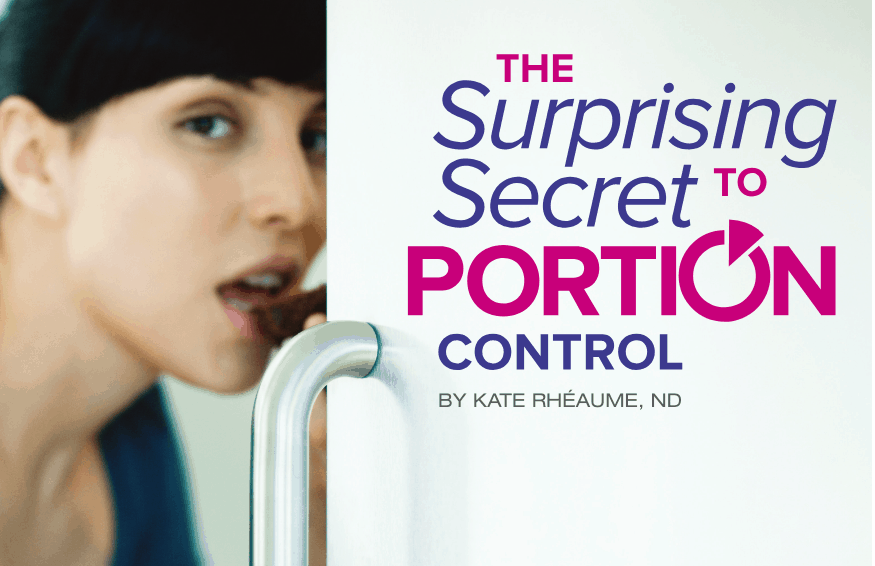
PORTION CONTROL. Ugh! As far as ugh-inducing phrases go, portion control is right up there with “summer school” and “tax audit.” The fact is, once we start eating, we want to keep eating until we are full. That’s human nature. And while some of us might be able to – as per the old slimming adage – stop when we are two-thirds full, many of us just can’t. To boot, eating smaller portions can exhaust willpower, potentially leading to binging later on.
Anyone who has ever endeavoured to lose weight has, at one point, attempted merely eating less. With another old weight loss dictum, “calories-in-versus-calories-out,” ringing in our ears, we start the day with the best of intentions, enjoying a light breakfast and an equally modest lunch. By dinner, all bets are off. Ravenous, we devour in seconds, then can’t seem to stop snacking all evening. Don’t feel bad. Surprisingly, it might have been that well-intentioned breakfast or lunch that set us up for our epic evening failure.

THE SECOND MEAL EFFECT
There’s a little-known secret to portion control that also helps with conquering cravings: what you eat at one meal affects what you want to eat at the next meal. The foods you choose for breakfast influences how hungry you are at lunch. Lunch affects dinner. Dinner impacts breakfast the next day. This isn’t just about food quantity. It stands to reason that if you eat a bigger breakfast, you will be less hungry at lunch. But there’s a more complex physiological response at work here. The second meal effect pertains to the foods we choose and their influence on appetite hours later.
Specifically, eating high-glycemic index (GI) foods at any meal (think white flour, bagels, doughnuts, bread, muffins, cereal, and pasta) cause us to feel hungrier and consume more food at the next meal. Conversely, eating blood-sugar-stabilizing fibre, fat, and protein at any meal will minimize appetite the next time we eat, making portion control effortless.
The key to this phenomenon is insulin. High-GI foods, such as the white flour wonders listed above, trigger a significant release of the energy-storing hormone insulin. This puts the body into feast mode, essentially sending a message of “hey, food is abundant now, let’s stock up – keep eating!”
As you can imagine, all this makes breakfast an important meal, for better or worse. Eating the wrong breakfast can sabotage your diet for the rest of the day. Eating smarter daily sets you up for success. What qualifies as a better breakfast? A veggie omelet with chèvre; unsweetened, full-fat Greek yogurt with nuts and seeds; a shake or smoothie bowl featuring avocado and fermented, plant-based protein sprinkled with chia or flax seeds. What these meals have in common is plenty of high-quality protein, fat, and fibre with minimal insulin-provoking sugar. By starting your day this way, eating well the rest of the day is much easier. So, the surprising secret is, if you simply plan your meals right, portion control takes care of itself.














